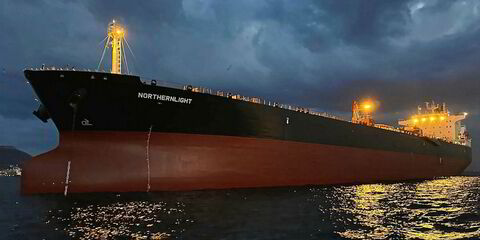Clarksons says the stronger traditional shipowners are showing increased interest in the dry cargo sale and purchase market.
The world’s largest shipbroker said in its half year report the number of bulker deals fell during the six months to the end of June as buyers "remained nervous that a cheap vessel today may be an expensive one tomorrow”.
However, with values down around 40% prices have settled with prompt resales around 20% above the price of a newbuilding.
“A number of the stronger, more traditional private family companies started to come into the market as buyers,” Clarksons said.
“Prices have started to firm, particularly in the kamsarmax and cape sectors.”
While the dry cargo market in the first half was the worst seen since 1985, the shipbroker noted a silver-lining in increased scrapping. It counts 70 capesizes scrapped this year.
“We are pleased to have increased our market share in this sector due to our maintenance of a specialist demolition desk,” it said.
“There is now a lot of underlying interest to invest in the market and a return in freight rates would see a continued investment from the heritage players,” Clarksons added.
Tanker deals "fairly thin"
In the stellar tanker market, Clarksons says second hand transactions have been fairly thin.
This is “partly because despite improved rates and earnings, public tanker companies have not really seen a big increase in valuation especially not with respect to NAV, and about half of the dry bulk fleet is owned by tanker owners so the private buyers were not moving in the first quarter,” Clarksons said.
“But we have started to see this change and we have thus been able to conclude a number of high capital transactions so far this year.”
On the newbuilding front, Clarksons says the market has been more conventional compared to the high volume of capital markets-backed transactions seen in 2013 and 2014.
“With dry and offshore clearly challenged, most yards are having to face further losses and a reduction in capacity, which overall is positive to the correction in demand/supply balances,” the report said.



